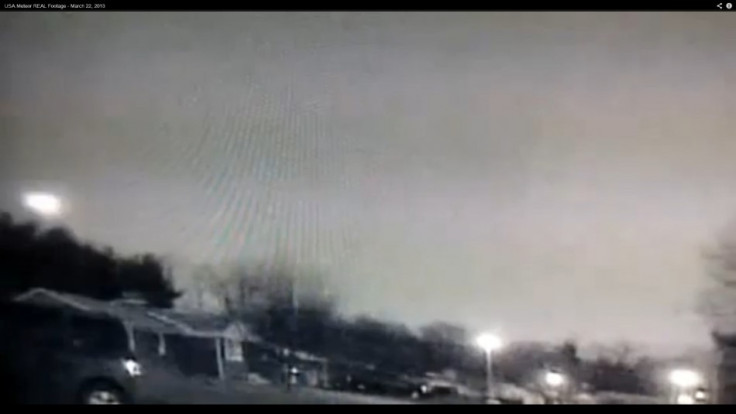Fireball Lights Up Night Sky Over New Jersey

People across the eastern United States gearing up for the weekend were stunned on Friday 22 March when a fireball streaked across the heavens, lighting up the evening sky.
Caused by a meteor the size of a boulder burning up in the Earth's atmosphere, it was witnessed in 13 US States and in two Canadian provinces, with more than 300 verified sightings recorded by the American Meteor Society.
Bill Cooke of Nasa's Meteoroid Environmental Office said the flash appears to be "a single meteor event". He said it "looks to be a fireball that moved roughly toward the south-east, going on visual reports".
"Judging from the brightness, we're dealing with something as bright as the full moon. The thing is probably a yard across. We basically have (had) a boulder enter the atmosphere over the north-east."
"It happened at a good time, around eight o'clock on a Friday night, when a lot of people were out to see it," said Robert Lunsford, the Society's fireball co-ordinator.
Talking to Reuters, Lunsford said that fireballs are defined as meteors brighter than Venus, and can even be brighter than the sun, such as the one that exploded over south-west Russia on 15 February.
Many thousands of fireballs burn up in the Earth's atmosphere every day, and many fall unnoticed during daylight hours or into oceans, he added.
From eyewitness accounts, the Society charted the meteor's most likely trajectory from eastern Pennsylvania across New Jersey, passing just south of New York City and then over the Atlantic Ocean.
It was seen across the Atlantic coast, "ranging from Maine to North Carolina. This object was also seen as far inland as Ohio," the group said in a statement.
In Maryland, WBOC-TV Meteorologist Dan Satterfield said reports seemed to indicate that the meteor broke into three pieces and "dissipated fairly quickly.. it doesn't look like it hit the surface".
People took to Twitter to describe their sightings.
Mykl@ChezWu said: "Totally saw this fireball/shooting star last night! It was brilliant!"
The sightings come on the eve of Near Miss Day, which commemorates a giant asteroid missing earth by only 500,000 miles in 1989.
Earlier this week, Nasa chief Charles Boulden was quizzed by the US House Science Committee on what Nasa would do if an asteroid were on a collision course with Earth. "If it's coming in three weeks, pray," he answered.
Last month a 150-foot asteroid passed just 17,150 miles from Earth, between the Moon and many commercial satellites.
Head@jaredhead tweeted: "Fireball over the East Coast. Or as I like to call it: Nature reminding us that we have no current asteroid deflection system. At all"
© Copyright IBTimes 2025. All rights reserved.























